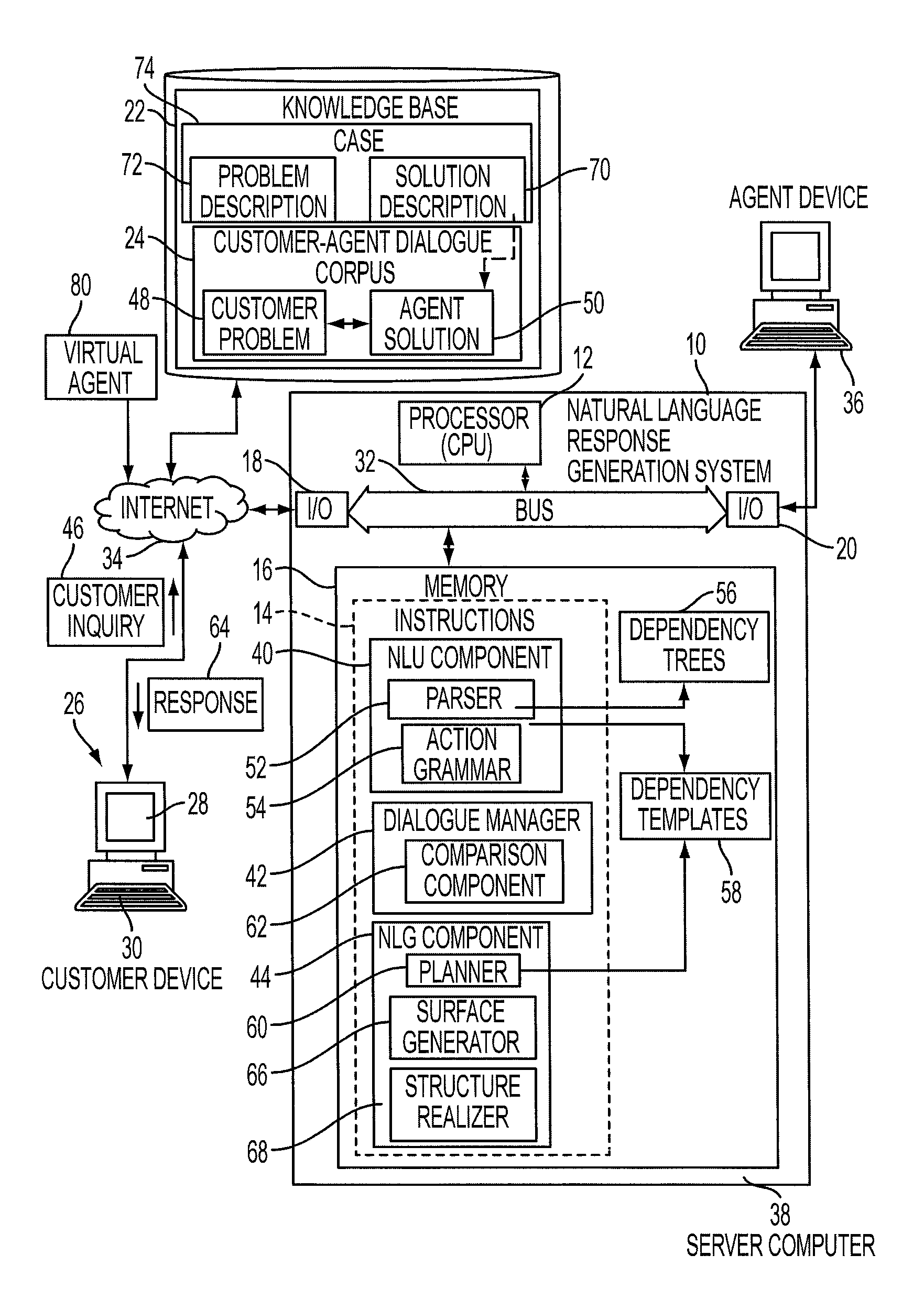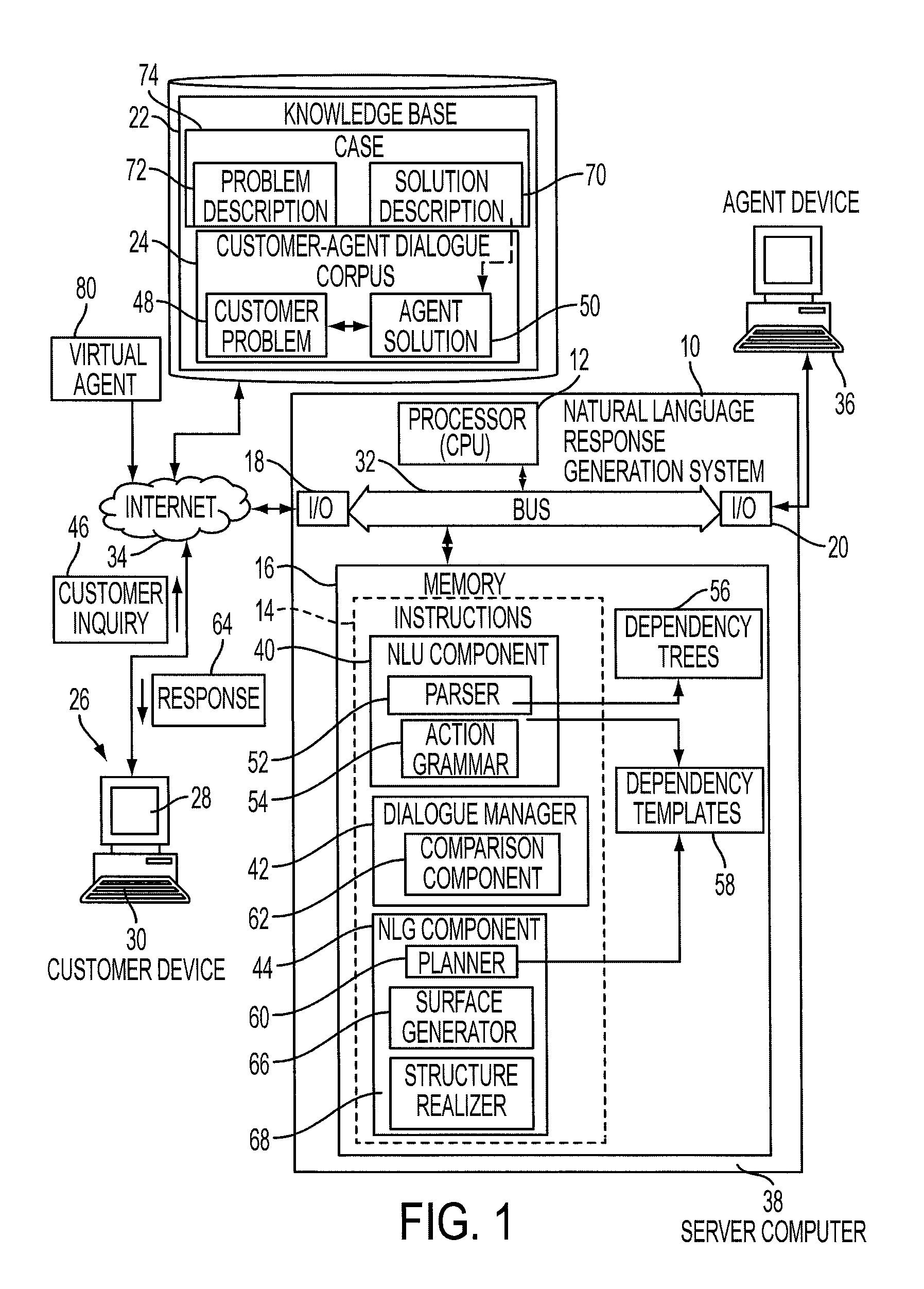System and method for response generation using linguistic information
a response generation and linguistic information technology, applied in the field of natural language processing, can solve the problems of lack of flexibility, inability to adapt to the language, and inability to use nlg variations or paraphrases,
- Summary
- Abstract
- Description
- Claims
- Application Information
AI Technical Summary
Benefits of technology
Problems solved by technology
Method used
Image
Examples
example application
[0095]A significant difference between a word template approach and the dependency template approach in the exemplary system 10 is shown in the example below. The example also illustrates how the exemplary system performs the exemplary method.
[0096]The sentences in Table 1 represent a set of sentences corresponding to an agent solution, or a first sequence of actions or steps, which could occur in a customer problem-agent solution dialogue.
[0097]
TABLE 1Set of training sentences used to create dependency templateTraining sentences1.Can you tell me if the Wi-Fi is activated?2.Can you check if the touch screen is functional?3. Is the Wi-Fi turned on?
[0098]The sentences in Table 1 correspond to an agent's response to a customer inquiry or problem statement. For example, in response to a customer inquiry which states “I cannot connect to the internet,” sentences 1 and 3 might be provided in response as the first step in a solution description, which may include a sequence of actions to d...
PUM
 Login to View More
Login to View More Abstract
Description
Claims
Application Information
 Login to View More
Login to View More - R&D
- Intellectual Property
- Life Sciences
- Materials
- Tech Scout
- Unparalleled Data Quality
- Higher Quality Content
- 60% Fewer Hallucinations
Browse by: Latest US Patents, China's latest patents, Technical Efficacy Thesaurus, Application Domain, Technology Topic, Popular Technical Reports.
© 2025 PatSnap. All rights reserved.Legal|Privacy policy|Modern Slavery Act Transparency Statement|Sitemap|About US| Contact US: help@patsnap.com



